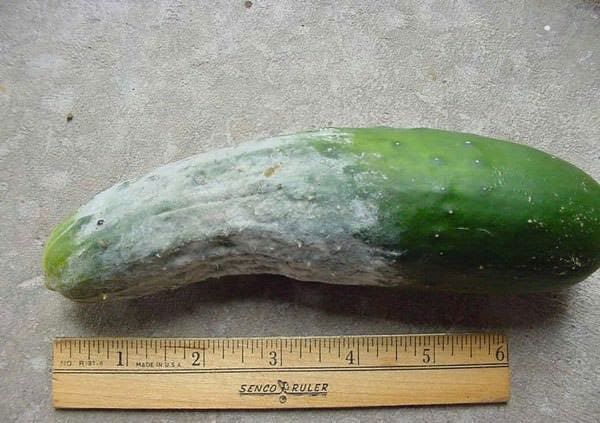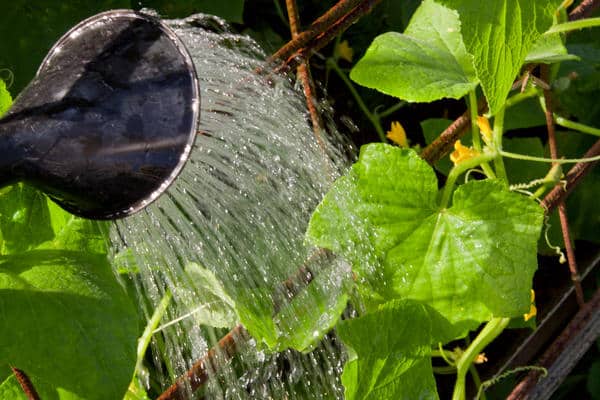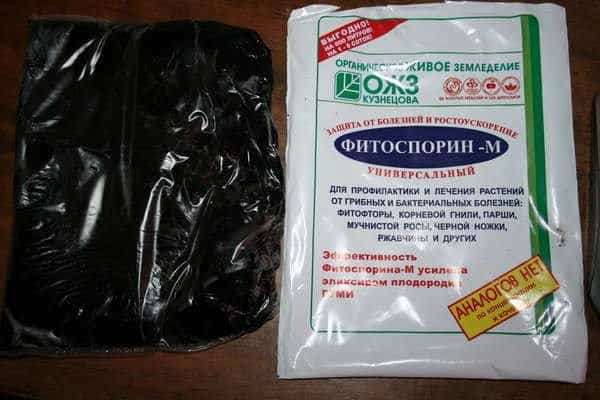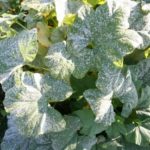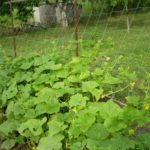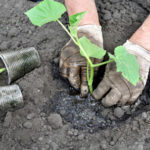What summer resident doesn’t want to grow a good harvest on his plot. But sometimes late blight on cucumbers interferes with normal growth and formation of ovaries on the bushes. The pathogens of the disease are difficult to remove from the soil, especially if the condition of the bushes is neglected. Most often, late blight appears in greenhouses and greenhouses, but the appearance of fungus in open ground is not uncommon.
Signs of late blight
In order to save cucumbers from late blight, you need to notice the disease in the beds in time.
Signs of late blight on cucumbers:
- The appearance of dark spots on the leaves.
- The leaves begin to curl and fall off over time.
- Stems and fruits turn black.
- The cucumbers begin to rot and decompose.
- An unpleasant odor appears.
- The ovaries stop forming.
Late blight is also called rot. The main danger of this disease is that it quickly spreads throughout the entire area. From infected plants, rain washes away some of the fungi, which then enter the soil. The same thing happens when watering. If fungi get into the soil, they remain there for a long time. Plants planted in such an area are subsequently infected with late blight.
Causes of late blight on cucumbers
Late blight can appear on cucumbers for various reasons. The most common:
- Through infected seeds.
- Excess lime in the soil.
- During storage of collected fruits.
- If the plant does not have enough air for various reasons.
- Reduced plant immunity.
- Sudden temperature changes during the day.
Mistakes of summer residents that lead to the appearance of late blight on the site:
- Improperly organized watering.
- Watering plants with a hose.
- Leave infected crops on the site.
- Neglect disease prevention.
Sometimes it is difficult to answer why the cucumbers began to dry out and the fruits to rot. But if this happens, you need to start treatment as quickly as possible.
How to treat cucumbers against late blight?
There are two methods to get rid of late blight on your site:
- Chemical.
- Biological.
Chemical method - involves the use of chemicals that are aimed at destroying the fungus. But this method is considered harmful to human health.
You can treat bushes with Bordeaux mixture. This is a time-tested remedy that will help quickly remove fungi from the area without damaging the crop.
The main thing is to get the proportions right; if the liquid is too concentrated, the leaves and stems will get burned and begin to dry out.
How to spray cucumbers with Bordeaux mixture:
- Dilute 20 ml of 0.5% Bordeaux mixture in 3 liters of water. Spray the bushes in the evening, when the sun is not so bright.
- A second treatment is required to consolidate the results. To do this, take 1% liquid and dilute it in 4 liters of water. Cucumbers should be processed 15 days after the first treatment.
If the treatment does not help, it must be repeated every 15 days until the late blight disappears.
Positive results are obtained by treating cucumbers with copper oxychloride. Treatment with this remedy will help get rid of late blight in a short time.
The following drugs are available for late blight:
- Screening
- Home.
- Barrier.
- Oksikhom.
You can buy them in specialized stores. After spraying with these products, cucumbers should not be eaten for a month until all the chemicals are released from the fruit.
When using chemicals for spraying, you should be careful. Such substances can be dangerous for humans, so procedures should not be carried out if the weather is windy outside. Otherwise, some of the chemicals may get on people.
Traditional methods of combating the disease
Cucumbers need a lot of space to prevent late blight from developing. If the bushes are planted too close, they are likely to start to hurt.
How to fight late blight using folk recipes:
- Garlic infusion. Grind 100 g of garlic cloves and leaves. Pour 10 liters of water. Insist for a day. Then strain and add 2 g of potassium permanganate to the strained infusion. You need to spray the bushes with the infusion before the ovaries form.The second spraying is 10 days after the first. In the future - every 14 days.
- Table salt solution. Use salt as needed. It creates a protective layer on the leaves that prevents late blight. Take 1 glass of salt for 10 liters of water. Stir.
- Spraying with kefir. The beds are treated with kefir a week after planting the seedlings in the soil. Then the procedure is repeated every week. Dilute 1 liter of kefir in 10 liters of water (whey can also be used). Leave the infusion to ferment for 2 days. After 2 days it is mixed and the beds are treated.
- Yeast. At the first sign cucumber diseases sprinkled with yeast. Take 100 g of yeast, dilute it in 10 liters of water and leave for 24 hours. Then add 30 ml iodine.
- Wood ash. No less effective in fight against late blight wood ash. It is used after the seedlings have taken root in a new place, before the start of the flowering period of cucumbers and at the first signs of the appearance of ovaries. Mix 1 bucket of water with 500 g of ash. Leave the solution to infuse for 3 days. It is stirred regularly all this time. After 3 days, add another 20 liters of water and 40 g of laundry soap. Spray several times per season.
It should be noted that spraying with a solution of kefir and salt will not help get rid of an existing disease. These are rather preventive procedures that will help avoid infection of the area with fungi.
Prevention against disease
Preventing the occurrence of a disease is much easier than treating it. Preventative work should be carried out in the spring, a few weeks before planting seedlings in the soil.
How to prepare the soil:
- Water the beds with a solution of copper sulfate.
- Dig up.
- Then water the soil again, but this time with Fitosporin (1 tbsp.products for 5 liters of water).
In addition to these procedures, it is important not to overfeed the cucumbers with mineral and organic fertilizers, plant crops according to the rules of crop rotation and remove weeds from the site in a timely manner. You should constantly remove old leaves, on which the fungus most often appears.
You need to choose cucumber varieties for planting that are immune to late blight. A large number of such hybrids have now been created. If the bushes grow in a greenhouse, it must be constantly ventilated and the windows must be opened.
Onions and garlic are planted next to the cucumber beds. The substances that are found in these crops destroy the pathogenic environment.
If late blight has already appeared, cucumber bushes protect from moisture during rains. To do this, the beds are covered with waterproof film. Even before planting the seedlings, mulch is added.

